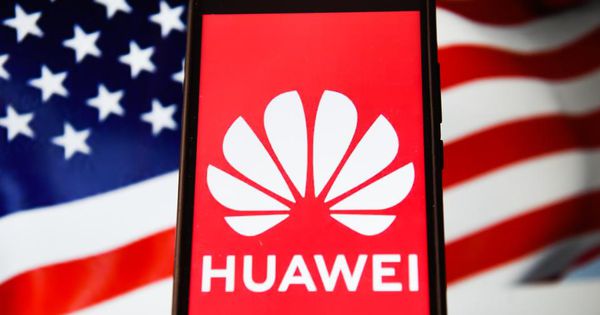LightRocket via Getty Images
The offer was first touted in mid-September and confirmed two weeks later—Huawei would be willing to license the company’s entire 5G platform to any U.S. business willing to pay the Shenzhen giant a hefty fee and invest time and resources to ready the tech for the U.S. market. A month later, and Reuters has reported Huawei exec Vincent Pang confirming “there are some companies talking to us,” albeit it still requires “a long journey to really finalize everything.” So could this be true? Could Chinese 5G kit really be on its way to the U.S. market despite everything?
As I reported when the original licensing offer was made, despite other analysis to the contrary, this was not an attempt to make concessions to Washington. It was much more complex than that. Huawei leads the world for the quality and capabilities of 5G networking, notwithstanding allegations of Chinese state sponsorship and national security compromises. In offering to open its code to U.S. diligence, Huawei would make it impossible for security hawks to allege such hidden backdoors.
This then became the twist—Huawei isn’t embarking on an exercise in friendly bridge building to Trump or others in Washington. This is a major game of “call my bluff,” an attempt to call out a situation Huawei believes is politically motivated and not rooted in facts. If the U.S. believes what it says, the hypothesis runs, then it will take up the offer and prove its point. If it doesn’t, then the accusations that have been made have nothing to do with security or technology.
For its part, Washington is not taking Huawei’s offer seriously. Last month, a State Department official told Reuters that “it’s just not realistic that carriers would take on this equipment and then manage all of the software and hardware themselves. If there are software bugs that are built in to the initial software, there would be no way to necessarily tell that those are there and they could be activated at any point, even if the software code is turned over to the mobile operators.”
The point being made here is that the Chinese code has come under fire in the U.K. and elsewhere for poor practices and inherent weaknesses. Weaknesses that could be exploited and enhanced once a licensee had built onto that base.
There is no U.S. 5G player to take on Huawei and ZTE, Nokia and Ericsson, and Huawei’s argument that the U.S. is technically disadvantaged by this carries does weight. All that said, to move from this to licensing Chinese kit the country’s security officials have accused of spying for the Chinese state is a stretch quite behind credibility. But, as I’ve said, this is not the object of the exercise.
As always in the battle of tug of war between Huawei and Washington, you need to step back and view the back and forth in context. We are a month from the end of Huawei’s current temporary exemption for the full effects of the U.S. blacklist. Essentially, the sanctions restricting the Chinese company’s access to U.S. suppliers has had certain carve-outs. These end in November.
While the company has ridden out many of the shocks of the last six months, stock piles are dwindling and the Mate 30 experience is a warning shot as to how much Huawei can achieve without access to tried and trusted U.S. partners like Google on which it has built its business. And whenever Huawei feels the heat, the battle shifts to the media—just like this, as the company courts support for its position.
Is a U.S. company likely to license this equipment? Almost certainly not, unless the politics changes. But that won’t stop the discussions taking place. Huawei is staffed by many senior Western execs who are heavily connected into all the likely candidate licensees. They talk regularly. But the reality is that any game changer in this situation is still more likely to come from trade talk concessions, not clever business moves.

















